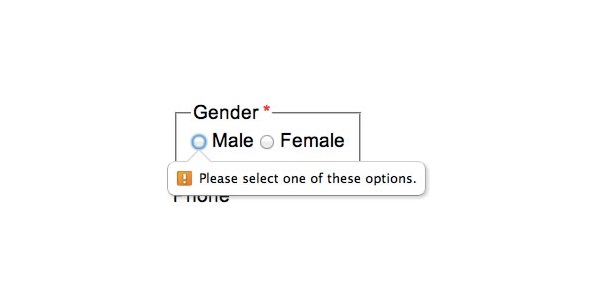On May 9 of this year, US Attorney General Loretta Lynch stood behind a lectern in a Washington, DC, press conference room and spoke about transgenderism. She said something with which I agree. She said, “None of us can stand by when a state enters the business of legislating identity and insists that a person pretend to be something or someone that they are not.” Now, when I say I agree with Lynch, what I mean is this: I would have used the same words she did. It is just that I would have used them to mean something very different. In fact, apart from her words, I disagree with everything she said.
This instance of communication breakdown illustrates the fractured times in which we live. When I use the word female, I do so in a readily understood way, to signify a particular something. When Lynch uses the same word, she does so to signify, well, something different. Alas, the attorney general and I are two people divided by a common language.
The arduous journey from radical to mainstream took same-sex sexual behavior roughly fifty years. For “gender identity,” the journey can be measured in months. Transgenderism has inundated our society with such rapidity that there has been little time to understand what it is, let alone react to its substance and consequences. It does not help that the associated terminology forever changes, with labyrinthine definitions squirming out of reason’s reach. I suppose that is the intention. We are very much in need of firm, high ground on which to stand and understand.
If we wish to move beyond the shape-shifting definitions and reach into the heart of the matter, we need to know three things: What is sex? What is gender? And how do the two relate to one another?
Start your day with Public Discourse
Sign up and get our daily essays sent straight to your inbox.Sex as Wholeness
One aspect of sex is that it exists as a form of wholeness. We can demonstrate this by looking at the relationship between parts and wholes. A car begins life as a collection of parts—engine, doors, and so on—which are then assembled to form a whole car. By contrast, in a natural reality such as the human body, the relationship between parts and wholes is the other way round. John, who is male, began life as a whole—one cell—from within which came the parts of his body. But to which part (or parts) does the word “sex” pertain?
What is it about John that makes him male? It cannot be his genitals, as he can lose them in an accident and remain male. Is there another candidate? His nose? Toes? No. Yet John definitely is male. So where is John’s maleness located?
To answer, let us again use the example of a car. An engine is part of a car. We can say the car has an engine. But we cannot say the car has transport. Why not? Because ‘transport’ is the word we use to signify the nature of a car as a whole. As such, we have to say a car is transport. Transport-ness is not located somewhere precisely because it is located everywhere. With maleness not located in any part of John, there is only one place it can be located: everywhere. We can say John has a nose, as his nose is part of his body, but not that he has a sex. We can say only that John is male, as sex is the word we use to signify the nature of John’s body as a whole. In beginning life as a whole, and in being conceived male, each part of John is inextricably also male.
This wholeness necessarily extends up to and includes John’s thoughts. Of course, we cannot take a DNA sample of John’s mind, but it is true to say John’s mind is the mind of a person who is male. So whether he is thinking “I am hot,” “I am cold,” “I am male,” or “I am female,” John’s thoughts are the thoughts of a male.
Our car/body analogy can also aid our understanding of the nature of sex itself. In being a form of transport, a car is that kind of thing that can in principle move around in space (from one place to another). Similarly, in being sexed John is that kind of thing that can in principle move forward in time (from one generation to the next). The possibility of doing (sexual acts/procreation) is dependent on the prior actuality of being (a sexed body). And with procreation possible only across sexual difference, each sex can be defined only in terms of the other.
In combination, wholeness and difference show us that there are but two fundamental and relational ways of being a human person: as a male and as a female. This makes sexual difference a “different difference.” It is humankind’s first and deepest difference. All our other differences—age, skin color, and so on—reside “inside” sexual difference, as each of them can be found only within each of the sexes. There are young white males, elderly black females, and so on, but there are no female males and no male females. Age and skin color are facets of a person; sex is the diamond of which these other attributes are facets. It should go without saying, then, that our fundamental legal identity ought to be our legal sex—a legal acceptance of the sex we are.
What Is Gender?
If this is sex, what is gender? Here, we need briefly to take our eyes off the body and to consult man-made law. According to the state, our gender identity is something that can be changed (“reassigned”). Furthermore, this can be done without surgery, hormone injections, or diagnosis. Indeed, the criteria for gender reassignment seem to be that there are no criteria. If John wishes to become “female” (in Lynch-speak), he simply changes his mind. Sex, says the body, is physical and given, whereas gender identities, says the state, are immaterial and chosen.
The sting in the tail is that the state now considers our fundamental legal identity to be not sex but gender identity—hence legal permission to use any restroom. The problem ought to be immediately apparent. John cannot think or choose without first being, and he cannot be without being male. His mind cannot “get ahead” of the sex he is, just as the engine of John’s car cannot somehow be “more than” the car itself. Nothing can be greater than the whole of which it is a part.
The ideological claim being made is that the mind has managed to dethrone the body in law. What are the consequences of such a claim? Think of it this way: suppose we own a diamond. If we convince ourselves that our diamond is in fact an emerald, there can be no one facet of the “emerald” to which we can point and say, “This is (still) the facet of a diamond.” We cannot deny the truth of the whole while simultaneously retaining the truth of some part of said whole. If we can deny the truth of sex, what facet of our identity can we not deny the truth of? If we accept gender-as-legal-sex, we must also accept the ideology’s many offspring: trans-ageism, trans-racialism, and so on.
So what happens to sex? The problem here is that we cannot have two fundamental legal identities. Sex can be retained in law neither as a “second whole” nor as part of our gender—no part of our mind is a body! The uncomfortable conclusion is that we cannot have both a sex and a gender identity. Put another way, the ideology leaves us de-sexed in law. Yes, our legal identity can now be chosen. More accurately, though, it can now only be chosen. To borrow Sartre’s words, we are condemned to be free.
In legally exchanging the truth of sex for the lie of gender, we embrace a self-chosen and false wholeness, thereby telling a lie about the whole of ourselves. In the eyes of the law, we are no longer somebody. We are “somemind.” With our body rendered invisible we can no longer know who John is by looking. We must instead rely on listening or reading. The state says we are made not of flesh but of words.
We have segued from “sex means sex” to “gender is just another word for sex” to “gender is different from sex.” And now, we are told we must accept the shockingly logical final step: that sex is just another word for gender. In the face of this meticulously executed sex change operation, none of us can stand by as the state enters the business of legislating identity and insists that a person pretend to be something or someone that he or she is not.














